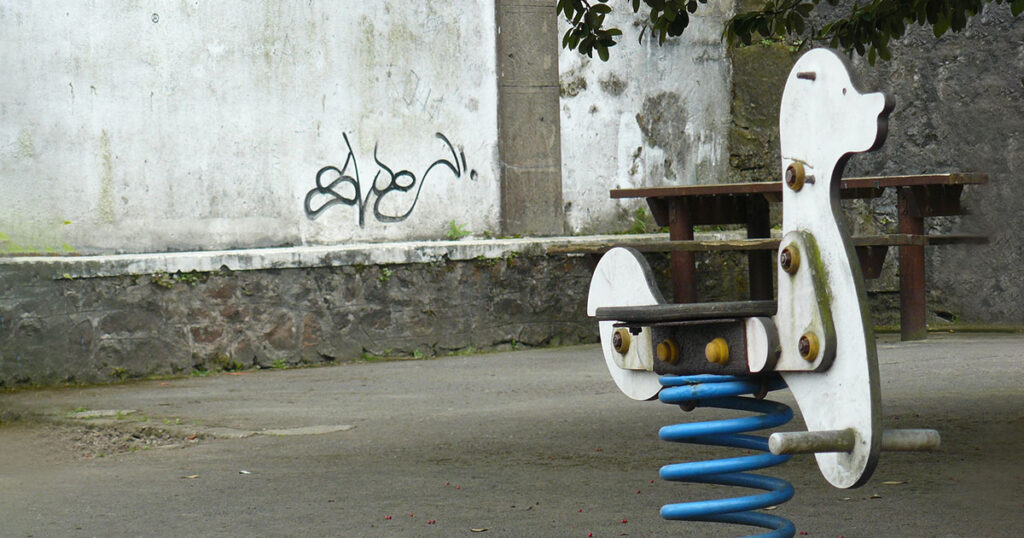
Down to the playground in the park I went on the first Saturday in February, in search of my friend and his granddaughter. The day was a cold but sunny one after a spate of winter storms, and people were out. Did they seem particularly friendly? I thought they did; they looked open, happy. I wandered among the glad children and their minders—the caretakers, I noticed, seemed mostly to be men—but I did not find my friend and his young charge. On I went to run an errand, passing a group of protesters in the corner of the park, in front of the city hall. I stopped to watch. Ten people held two large banners among them. Besides a reporter taking pictures, I was the only onlooker, and I had paused for just a moment, wondering what the protest was for.
“Siero es contra les violencias machistas” was handprinted in white marker on a sheer purple cloth banner. Siero is against gender-based violence. A similar message was on another, dark purple banner. Both were in Asturian, a language practically signaling protest. I see it employed on the often-defaced road signs announcing a town, the Spanish name scratched out and the Asturian painted in. These 10 people, however, despite their solemn message, looked cheery, like everyone else I saw. The lightweight banners, the two shades of purple, the clean printing—it made a pretty sight. But why protest gender-based violence today? Because the first month of the new year had ended with a shocking toll—seven women murdered at the hands of men they loved or had loved, men who presumably had felt the same. But there it seemed the sameness ended, the men feeling and giving into rage, the women feeling fear. Rage and fear—who doesn’t feel both, at some time? An even greater number of men and women made the news in December—11 deaths from gender-based violence.
Later, at home, I looked up both statistics on the internet, finding sites that include detailed reports of every case of a woman murdered by a man, keeping count of how many women were victims of current or former partners. Lawmakers are considering how to protect women by allowing them access to any record of accusations of gender-based violence made against their partners. Other help is ever more accessible, such as hotlines and other numbers to report abuse or seek urgent help. Plus public awareness campaigns. But in the confusion of terminology—femincidios, violencia de género, violencia machista—one thing was clear to me: no one wins these fights, and men’s groups ought to be looking into hotlines to report feelings of overwhelming ire, boiling rage. Men and women are not both guilty when one attacks the other, but both may be victims.

